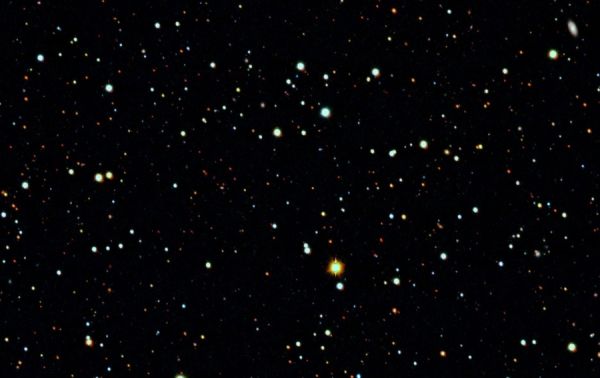The Milky Way is surrounded by dozens of dwarf galaxies that are thought to be relics of the very first galaxies in the universe. Among the most primitive of these galactic fossils is Tucana II — an ultrafaint dwarf galaxy that is about 50 kiloparsecs, or 163,000 light years, from Earth.
Now MIT astrophysicists have detected stars at the edge of Tucana II, in a configuration that is surprisingly far from its center but nevertheless caught up in the tiny galaxy’s gravitational pull. This is the first evidence that Tucana II hosts an extended dark matter halo — a region of gravitationally bound matter that the researchers calculated to be three to five times more massive than scientists had estimated. This discovery of far-flung stars in an ancient dwarf galaxy implies that the very first galaxies in the universe were also likely extended and more massive than previously thought.
“Tucana II has a lot more mass than we thought, in order to bound these stars that are so far away,” says MIT graduate student Anirudh Chiti. “This means that other relic first galaxies probably have these kinds of extended halos too.”
Read more at: Massachusetts Institute of Technology
The vicinity of the Tucana II ultra-faint dwarf galaxy, as imaged with the SkyMapper Telescope (Photo Credits:Image: Anirudh Chiti, MIT)


